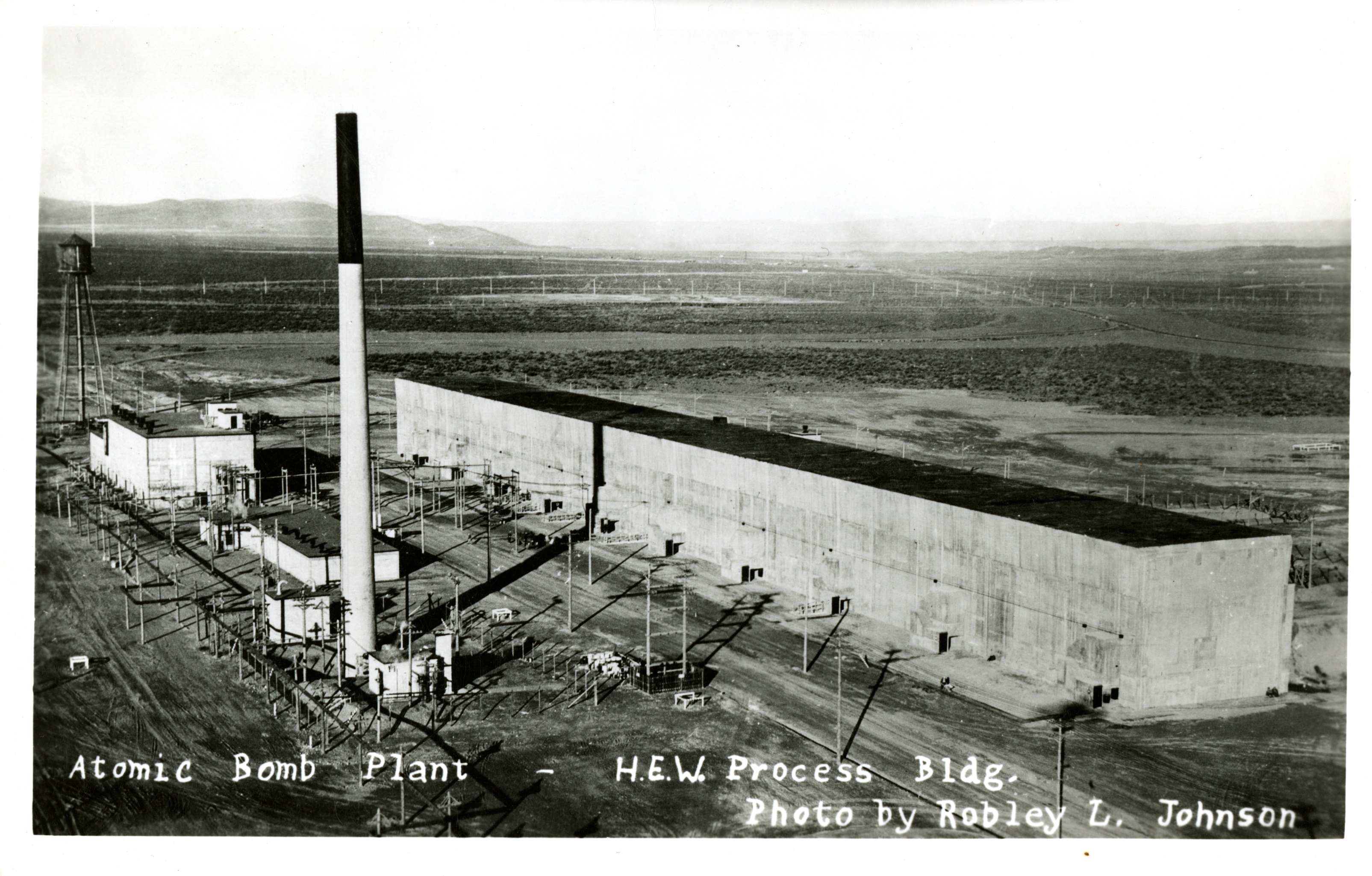Manhattan Project Signature Facilities
T Plant, Chemical Separation Building, Hanford, Washington

Completed in December 1944, T Plant was the world's first large-scale plutonium separation facility. Only about one atom in every 4,000 within the uranium slugs was converted to plutonium in the three Hanford production reactors, and these atoms had to be separated from the remaining uranium and other fission products that had been created.
The highly radioactive uranium slugs were dropped into water pools behind the piles and then moved by remote-controlled rail cars to a storage facility five miles away. When short-lived radioactivity had sufficiently decayed, the slugs were transported by rail to one of the two chemical separation facilities, either T Plant or B Plant. The chemical separation buildings are massive canyon-like structures, 800 feet long, 65 feet wide, and 80 feet high, nicknamed "Queen Marys" because of their size and shape. Inside, a row of forty concrete cells, most of them about fifteen feet square and twenty feet deep, ran the length of the building. Each cell was separated by six feet of concrete and was covered by removable concrete blocks six feet thick and weighing thirty-five tons.
The slugs were dissolved at the start of the process and bismuth phosphate carried the plutonium through the long succession of process pools. The entire area above the cells was enclosed by a single gallery sixty feet high and running the length of the building. Radiation levels in the gallery, or canyon, were too high to permit access by unprotected personnel. Along one side of the cell row and separated from it by seven feet of concrete were the operating galleries on three levels, the lowest for electrical controls, the intermediate for piping and remote lubrication equipment, and the upper for operating control boards that included specially designed periscopes and closed-circuit television sets. Due to the high radiation levels, the canyons were virtually inaccessible and had to be repaired by remote control or, when radiation levels were low enough, by personnel wearing full radiation protection gear. T Plant ceased chemical separation in 1956 but continues to be used for other activities.
Source: Department of Energy's Manhattan Project "Signature Facilities"